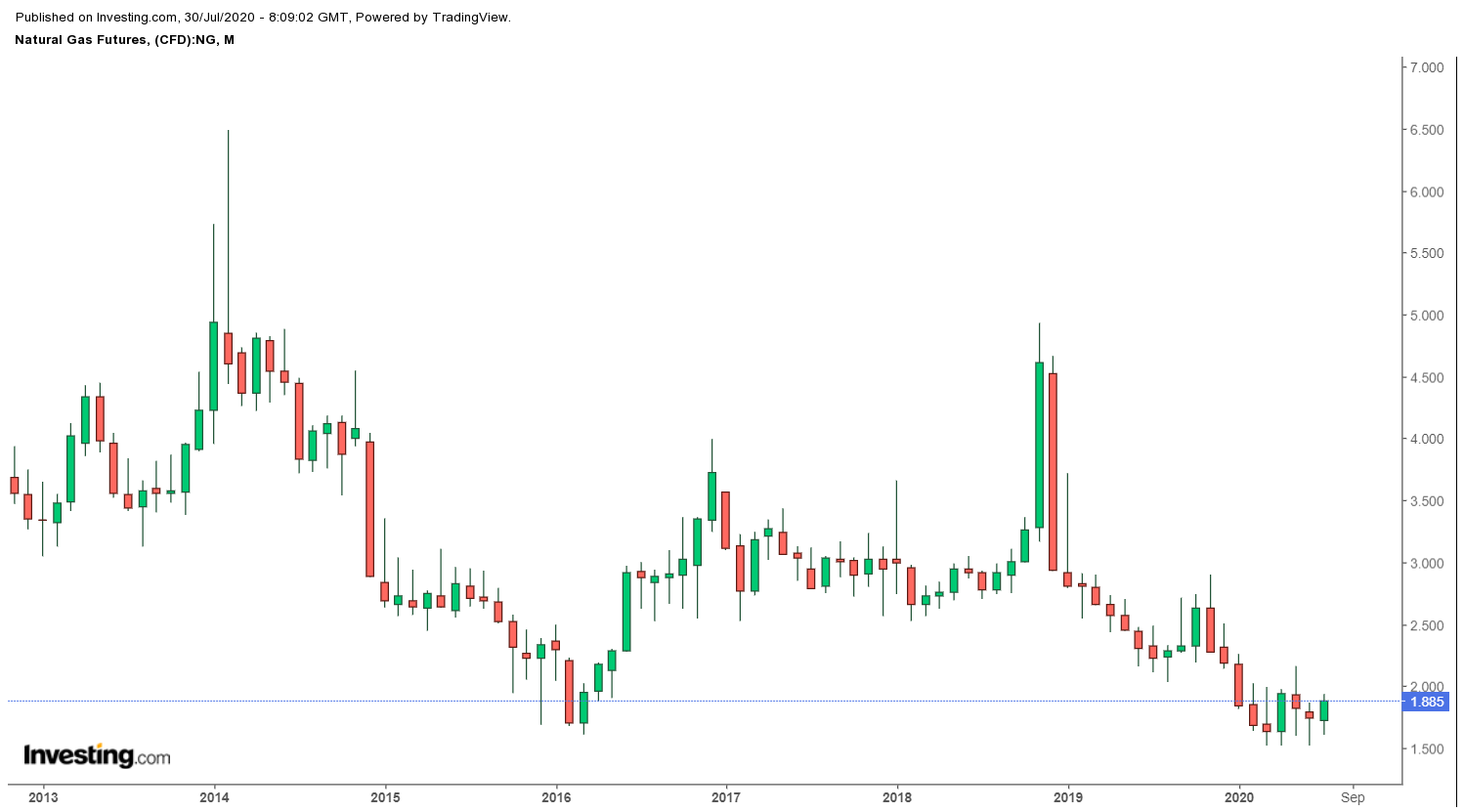A succession of modest storage builds have given natural gas an unexpected price boost, as the coronavirus pandemic threatens to resurge, turning July into the first winning month for the bulls out there, after two straight months of declines.
Hotter temperatures than usual this month have forced Americans to crank up the air-conditioning more than they ordinarily would in July, resulting in extraordinary power burns that have left little excess gas to flow into storage from each week’s production.
As a result, natural gas futures are on course for their biggest gain for the month of July in eight years.

Smallest Storage Build In 15 Weeks Coming Up
“Storage injections have trended steadily downward in recent weeks and stayed at, or below, the 5-year average pace through the entirety of July, thanks to hotter than normal weather,” Dan Myers, analyst at Gelber & Associates, said in an email on Wednesday to clients of the Houston-based gas consultancy.
In today’s storage data due from the US Energy (NASDAQ:USEG) Information Administration at 10:30 AM ET (14:30 GMT), Myers and various analysts are predicting a build of just 26 billion cubic feet for the week ended July 24—the smallest in 15 weeks.
The EIA reported an injection of 37 bcf for the week ending July 17 and a build of 45 bcf for the week ending July 10.
Just for comparison, last year’s peak for injections during July was 89 bcf.
Light Storage Builds Help Gas Market To 8% Gain
This summer's smaller storage builds have pushed up the price for benchmark Henry Hub gas futures by close to 8% in July. This will the first month in which gas prices have increased since April, when the market rose as much as 19%—again, due to weather anomalies over the spring.
And it is also the biggest price rise, in percentage terms, for this month of the year since the near-14% gain in July 2012. Natural gas has also performed twice as well as crude oil this month, with WTI futures on track for an increase of around 4%.
Gelber & Associates analyst Myers said:
“Peak summer heat coincided with record natural gas-fired power demand last week."
“However, moderating temperatures in the Mid-Continent and South Central going into August will allow more gas to flow into storage (compared to average) early next month."
Peak Summer Heat To Subside Soon Though
Dominick Chirichella, director of risk and trading at the Energy Management Institute in New York, also believes the higher-than-normal summer heat in the US Northeast—the most price-sensitive region for gas—will subside this week.
Chirichella told subscribers:
“Cooler anomalies are likely to build across much of the Central US through day 8, peaking between days 4-5 across the Central Plains and Mid-Mississippi Valley."
“Cool anomalies will hold across much of the Central US during the day 6-10 period, with the coldest anomalies expected to occur on days 6-7 before readings should moderate back closer to normal by day 10."
LNG Demand, Exports Remain A Challenge With COVID-19
Naturalgasintel.com observed in a blog that limited storage builds could help ward off containment challenges in the fall, though a resurgence of coronavirus and continued lackluster demand for liquefied natural gas, or LNG, will still hang over the market.
Heat-driven demand through the summer is critical for gas prices, because with cases of COVID-19 on the rise again, the outlook for near-term commercial and industrial energy demand is less clear. By extension, LNG export activity remains light relative to pre-pandemic levels, including to key us export destinations in Europe and Asia, although, compared with a year ago, exports to both region are much higher, according to Reuters.
Disclaimer: Barani Krishnan does not own, or hold positions in, any of the assets he writes about.
